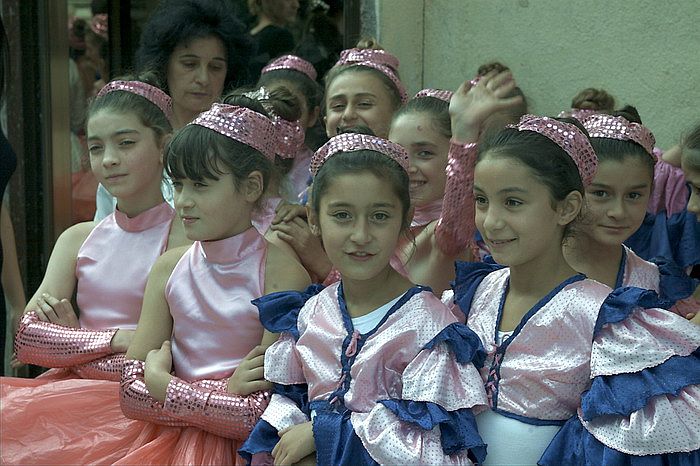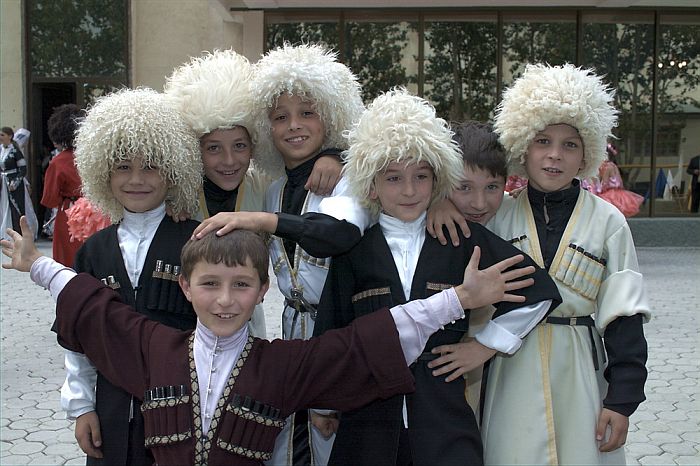The article “OSSETIC LANGUAGE i. History and description” was written by Fridrik Thordarson for the Encyclopedia Iranica and originally published on July 20, 2009. Not stated in the Thordarson article however is the fact that the Ossetians refer to themselves as “Ir-on” (Iranian linguistic equivalent to Eire-an, Ir-an). Kindly note that the videos, images and accompanying captions do not appear in the original article in the Encyclopedia Iranica. Excerpts of that article are reprinted below (with minor edits) as summary points for readers, who can refer to the full text of Thordarson’s article for more information here …
Readers further interested in these topics can also consult:
- The Scythians and Sarmatians
- The Origin of pre-Imperial Iranian Peoples
- The Alans
- Europa & Eire-An
- Zarina: Comprehensive Website about the Ossetians and their Iranian speaking Ancestors
= = = = = = = = = = = = = = = = = = = = = = = = = = = = =
Ossetic (or Ossetian) is an Iranian language spoken in the Central Caucasus, mainly in the North Ossetic Republic (Alaniya) of the Russian Federation and in the South Ossetic (until 1990, autonomous) area of Georgia. In addition, minor Ossetic settlements exist at various places in the North Caucasus. An Ossetic-speaking population is also found in a few villages in central and eastern Anatolia (Turkey), the descendants of refugees who left their native country in the North Caucasus in the 1860s.
Iraniha video post “Ossetians (the Iranian people of the Caucasus) (Source: Iraniha in YouTube).
Ossetic belongs to the eastern branch of the Iranian family of languages. The linguistic ancestors of the present-day Ossetes were Alan tribes who, according to Greek and Roman sources, emigrated from Central Asia to the lands north and east of the Black Sea about the beginning of the Christian era – for more see “” …
Video post by Bahador Alast entitled “Similarities between Ossetian and Persian” (Source: Bahador Alast in YouTube).
The Alans were, in their heyday in the early Middle Ages, a predominant people in the Northwest Caucasus, and their dialects were widespread in the area. The language was gradually ousted by Turkic and Cherkes immigrants from the west and north, and it is now limited to a relatively small region. There is some evidence that the present Ossetic-speaking area was formerly inhabited by Nakh-speaking (Ingush-Chechen, NE Caucasus) tribes. The previous presence of the Alans in the Northwest Caucasus is borne out by a number of place names of Iranian origin in modern Turkish and Cherkes areas.

Modern-day Ossetian girls in traditional attire in Tskhinval (Source: Ossetians.com).
According to the 1989 Soviet census, Ossetic is spoken by about 500,000 people; of these, about 330,000 live in North Ossetia and 125,000 in Georgia (ca. 64,000 in South Ossetia). These figures should, however, be regarded with some caution as a large part of the Ossetic population is bilingual, speaking at least one of the neighboring languages—Kabardian (Cherkes), Ingush (a Nakh, NE Caucasus language), or Karachay-Balkar (Turkic languages). Knowledge of Russian is also widespread, especially in towns, for Russian serves as a medium of administration and instruction and as a lingua franca for communication with the various neighboring peoples. Bilingualism goes far back and must have characterized the normal social situation from time immemorial all over the North Caucasus. Language shifts and the change of linguistic and tribal borders must therefore have been common.

Ossetian young woman in traditional ancient Iranian attire (Image Source: iFunny) – As noted in the iFunny venue: “Ossetians are an Iranian-speaking people living in the Caucasus. They are considered descendants of the Alans. The main population of North Ossetia (part of the Russian Federation) and South Ossetia. They also live in other regions of the Russian Federation, in Georgia, Turkey and other countries. The Ossetian language belongs to the Iranian group (northeastern subgroup) of the Indo-European language family. Ossetians are mostly bilingual (bilingualism is Ossetian-Russian, less often Ossetian-Georgian or Ossetian-Turkish). Ossetians are adherents of two world faiths (Christianity and Islam). Also among them are fans of traditional Ossetian beliefs. So, according to a large-scale survey of the Sreda research service, conducted in 2012, 29% of respondents were assigned to the category “Confessing the Traditional Ancestral Religion” in North Ossetia – the highest percentage in the Russian Federation” .
Ossetic, like its Alanic predecessor, has for millennia been separated from the sister languages of Central Asia, being spoken in non-Iranian surroundings.

Modern-day Ossetian boys in Tskhinval attired in Kafkaz dress (Source: Ossetians.com). The Ossetians of the Caucasus speak an ancient Iranian language akin to modern Persian and Kurdish.



